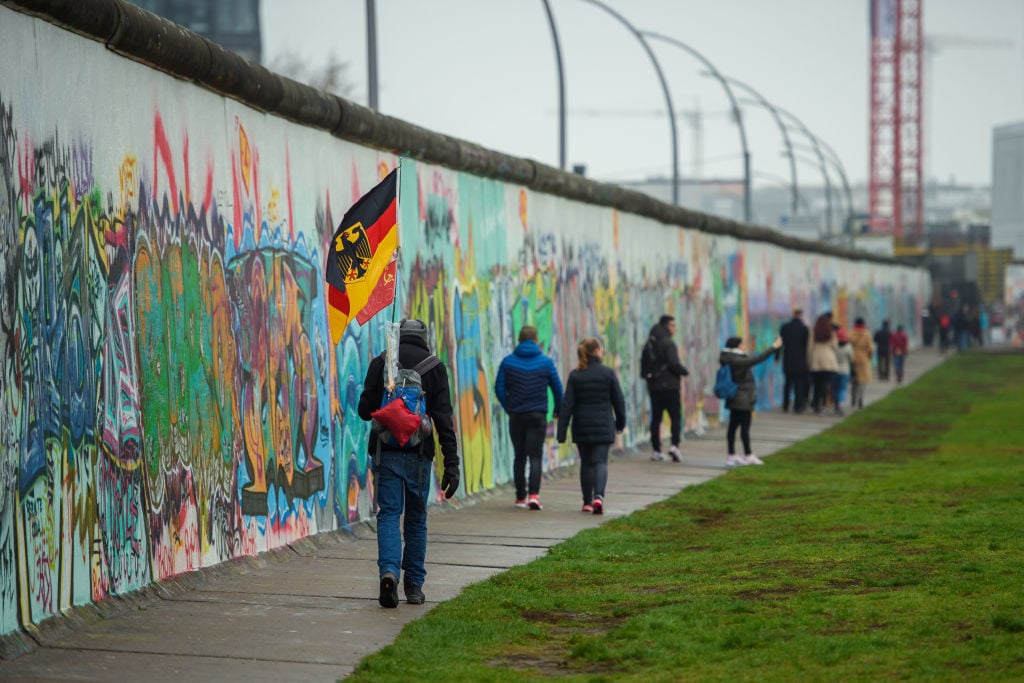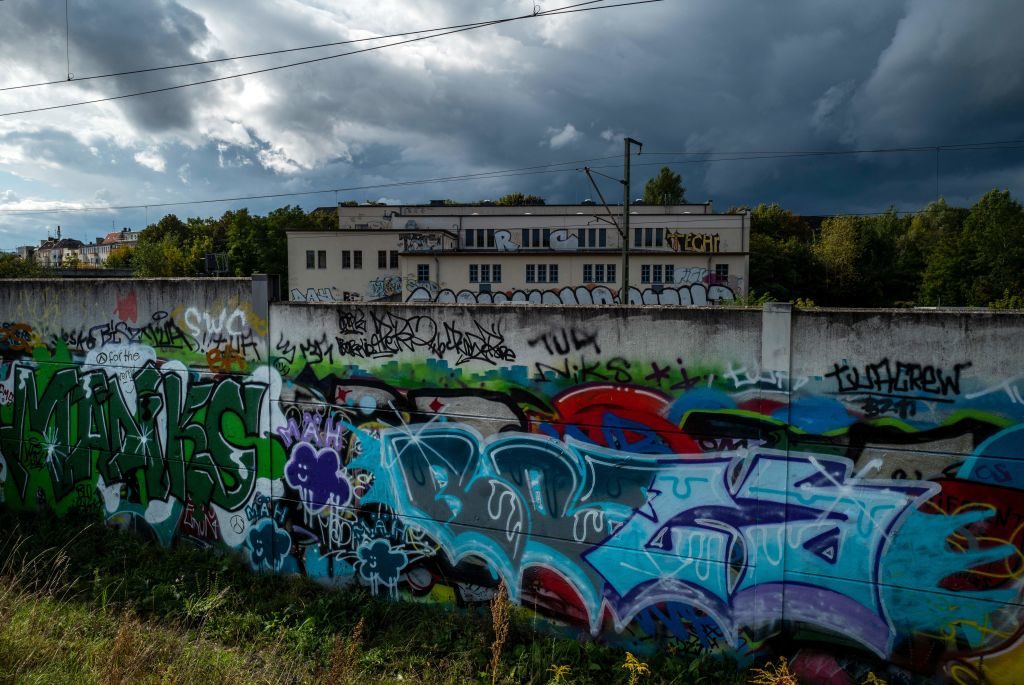Art World
A 200-Foot Section of the Berlin Wall Has Been Torn Down to Make Way for Condos, Leaving Historians Appalled
One of the largest remaining stretches of the inner wall was tucked quietly away in a suburb.

One of the largest remaining stretches of the inner wall was tucked quietly away in a suburb.

Kate Brown

The German capital has many ruins that bear witness to its tumultuous history. Stretches of the Berlin Wall are preserved as a reminder of the pain wrought by political division during the Cold War, but a piece of that memory has disappeared overnight to make way for new apartments.
Historians are furious that an almost 200-foot (around 60-meter) stretch of the graffiti covered barrier has been demolished in Pankow, a borough in the northeastern part of Berlin. The Berlin Wall Foundation says it was not been informed about the removal, according to Der Taggespiegel. The foundation’s curator Manfred Wichmann told the paper that the lost piece was “a stone witness of how deeply the border regime of the German Democratic Republic intervened in the everyday life of the people in East Berlin.”
The lost section was part of the Hinterlandmauer, meaning inner wall section, that was installed in the 1970s, reinforcing the barrier first erected in 1961. This particular strip ran along a railway line that went between Berlin and the Polish border city of Szczecin; it served as an added protection against any refugees who managed to slip past the main border wall.

Tags cover a wall near railway tracks in Berlin’s Pankow district. Photo: John MacDougall/AFP via Getty Images.
Last November marked the 30th anniversary of the Fall of the Berlin Wall. Amid citywide commemorative events, the Berlin Wall Foundation and the GDR Museum announced that they were working to ensure that this Pankow remnant of the wall was preserved. Though not as obviously remarkable as the East Side Gallery or Bernauerstrasse, this particular section was one of the largest pieces that remained.
The barrier that divided East and West Germany snaked throughout much of inner Berlin, and several parts of it are preserved as monuments, but this particular section was not listed as a historical site. Around the city, some parts are now tourist hotspots while other sections sit quietly and overgrown in Berlin’s suburbs. Three decades since the reunification of Germany, around 15 miles (25 kilometers) of the wall still stand but most are in tourists sites. Just under a mile exists outside of those areas, Wichmann tells Der Taggespiegel: “They are disappearing more and more.”